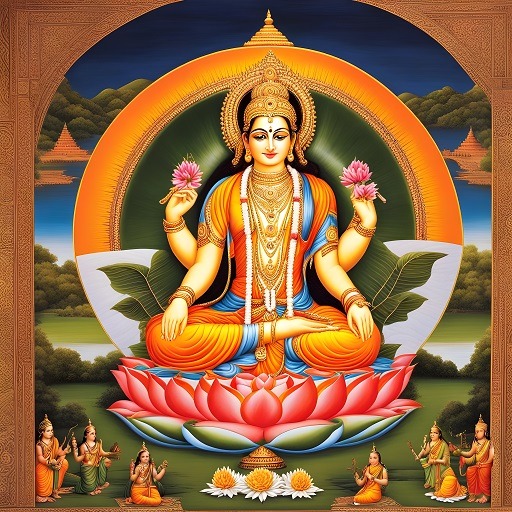#PathToLiberation
Explore tagged Tumblr posts
Text

This story is about the final moments of Bhishma Pitamah from the Mahabharata, showcasing his extraordinary perspective on life and death.
During the Mahabharata war, Bhishma Pitamah was wounded. He called Arjuna to create a bed of arrows. He knew that his body was suffering, but his conscious soul remained unaffected. He began meditating on Lord Krishna.
Meanwhile, Lord Krishna was in deep meditation and sensed that Bhishma Pitamah was remembering him. Krishna then told Yudhishthira, "If anyone is proficient in Dharma at this moment, it is Bhishma Pitamah. Go to him and learn about Rajdharma."
Lord Krishna, along with the Pandavas, went to Bhishma Pitamah. On the day of Uttarayan, Bhishma was preparing to leave his body. Lying on a bed of arrows, the great warrior of India, Bhishma, said to Krishna, "Kanhaiya, you reside in the lashes of my eyes. Yudhishthira, are you well?"
Bhishma Pitamah then said to Yudhishthira, "You have faced many hardships in life, enduring exile and an unknown life. This is the course of time. Even those who have advisors like Lord Krishna are not immune to the sufferings of the world. The world is called 'Dukhalaya' (a place of sorrow). Blessed are those who meditate on the form of Krishna to overcome the miseries of the world."
Bhishma asked Krishna, "What terrible deed did I do that I have to lie on this bed of arrows? I meditated and analyzed 72 lifetimes, but I could not find any heinous act that would deserve such suffering."
Lord Krishna smiled and replied, "Pitamah, you should have meditated one more birth back. In your 73rd birth, you had captured a green-winged parrot and caused it pain. The consequences of that action are what you are facing now. Action is in the hands of humans, but its result is in the hands of God."
"The results of actions are of three kinds—mild, intense, and extreme. Mild karmas can be changed by devotion and effort. Intense karmas can be mitigated with the help of others, while extreme karmas must be endured."
At this moment, Bhishma told Krishna, "The time has come for me to leave this body. Kesava, until I depart, please stand before me so that I can keep my gaze upon you."
Bhishma then referred to his intellect as his "daughter" and said, "O Lord Krishna, I offer my purified intellect to you. This is my daughter, which I have purified through penance, vows, and truthful speech. Please accept it."
In his final moments, Bhishma Pitamah imparted the lesson that in life, one should renounce attachment and hatred, and dedicate one's intellect to God so that the soul can merge with the Supreme Soul.
Following this, under the guidance of Lord Krishna, the Pandavas performed the last rites for Bhishma Pitamah.
Thus, this story clarifies the deeper meanings of life, action, and death, teaching us that the fruits of our actions must eventually be experienced, but through devotion to God and walking the righteous path, we can attain mental peace. This discourse is known as "Bhishma Panchak" in the Mahabharata. People observe the Bhishma Panchak Vrat during this time. Devotees fast to attain liberation. They also fast for the good health of themselves and their children. During this month, taking an early morning bath is believed to provide the benefit of bathing at all sacred places. This Vrat is observed for five days, beginning on the Ekadashi (11th day) and concluding on the full moon day, when Bhishma Dev is remembered. During the Bhishma Panchak, grains should be avoided, and for the past five days, only milk or water should be consumed. Bhishma Panchak is also known as Vishnu Panchak.
#BhishmaPitamah#Mahabharata#BhishmaPanchak#Karma#LifeAndDeath#Devotion#SpiritualWisdom#Krishna#HinduWisdom#Dharma#Meditation#DivineTeachings#SpiritualJourney#Bhishma#EternalWisdom#Yoga#PathToLiberation
2 notes
·
View notes
Text
"Dancing with Eternity: Vasistha’s Path to Liberation"

Vasistha, the seer-sage of the Rig Veda, never taught liberation as an escape — he presented it as a dance. A cosmic waltz, where the dancer and the dance dissolve into one, and freedom is not at the end of effort, but woven into every step you take.
When Vasistha looked at life, he didn’t see a prison of births or a ladder of karmas to climb. He saw rhythm. He saw the eternal inviting each soul to sway to the music of the moment, to let go of resistance and merge into the divine choreography playing out in real time.
Dancing with eternity is not passive. It isn’t about withdrawing to a cave or meditating away your worldly life. It’s about discovering that the Eternal is not some distant deity, but the flow behind every breath, every heartbeat, every interaction — and once you realize that, life itself becomes liberation.
In the Rig Vedic hymns attributed to Vasistha, there’s a recurring symbol: movement within stillness. The rivers flow, the winds whisper, the stars swirl across skies — and yet, at the heart of this cosmic movement, lies an unshakable stillness. The sage’s wisdom teaches: the moment you recognize this stillness inside, your life becomes the dance of eternity.
You are not separate from existence; you are the rhythm it chooses to express. When you flow with life rather than fight against it, suffering loosens its grip. Liberation is not something to earn, it’s your birthright — but it only reveals itself when you start dancing to life, rather than marching through it.
Practical Toolkit for Daily Integration:
1️⃣ The Pulse Pause: Every hour, pause for 30 seconds. Feel your heartbeat, listen to your breath. Realize this rhythm is the same ancient drumbeat that Vasistha heard echoing through the cosmos. Life is already dancing inside you.
2️⃣ Swaying Meditation: Instead of sitting rigidly, practice 5 minutes of gentle swaying meditation — letting your body move with your breath. This physical act tunes you to the inner flow beyond thought.
3️⃣ Cosmic Listening: End each day by lying still and focusing on ambient sounds — the fan, distant traffic, your own breath. Let the sounds dissolve your boundaries, reminding you that you’re a note in the universe’s infinite song.
4️⃣ Liberation Affirmation: Every morning say: “I am part of the Eternal Dance — no beginning, no end.” Let this mantra shape your mindset before your day begins.
Vasistha’s path isn’t about transcendence through detachment — it’s about seeing through the illusion of separation while fully embracing existence. When you dance with eternity, you don’t fear endings, because you’ve realized there were none to begin with. The divine rhythm doesn’t end with death; it simply shifts form, and so do you.
This is not enlightenment for a monk, but liberation for the everyday soul.
#VasisthaWisdom#RigVedaTeachings#SpiritualGrowth#PathToLiberation#AncientWisdomModernLife#ConsciousLiving#InnerJourney#EternalDance#SelfRealization#SoulAwakening#MysticMindset#VedicPhilosophy#DivineAlignment#SpiritualPractice#CosmicConnection
0 notes
Text
Unveiling the Belief System of Sanatana Dharma: A Tapestry of Spirituality and Cosmic Harmony
Introduction:
Sanatana Dharma, often referred to as Hinduism, is more than a religion; it's a way of life that embraces a diverse array of philosophies, beliefs, and practices. In this article, we embark on an exploratory journey through the annals of Hindu scriptures, puranas, vedas, and other texts, to unravel the intricate and profound belief system that forms the foundation of Sanatana Dharma. The Eternal Truth: The term "Sanatana Dharma" translates to "Eternal Truth" or "Eternal Way." At its core, it signifies the timeless principles that govern the universe and human existence. The belief system of Sanatana Dharma revolves around the understanding that there's an underlying cosmic order that sustains and guides all creation. This belief infuses reverence for all forms of life and encourages individuals to align their lives with these eternal principles. Multifaceted Deities and Cosmic Forces: One of the defining features of Sanatana Dharma is its rich pantheon of deities and cosmic forces. From the supreme consciousness of Brahman to the dynamic energies of Shiva, Vishnu, Shakti, and countless other manifestations, these deities embody various facets of existence. These diverse deities reflect the multifaceted nature of the divine and offer a multitude of paths for devotees to connect with the ultimate reality.

The Concept of Karma and Dharma: Karma and Dharma are pivotal concepts in the belief system of Sanatana Dharma. Karma signifies the law of cause and effect, emphasizing that every action carries consequences. Dharma, on the other hand, refers to righteous duty and ethical responsibility. The belief is that adhering to one's dharma while performing selfless actions leads to spiritual growth and liberation (moksha) from the cycle of birth and death. The Pursuit of Liberation: The ultimate goal of Sanatana Dharma is self-realization and liberation (moksha). The belief system acknowledges that the material world is transient and filled with suffering. The path to liberation involves transcending attachments and delusions to recognize one's true nature as divine. Various spiritual practices, such as meditation, yoga, and selfless service (seva), aid individuals in their journey toward liberation. References Across Scriptures: The belief system of Sanatana Dharma is woven throughout a vast array of scriptures. The Vedas, Upanishads, Bhagavad Gita, and Puranas each contribute to the intricate tapestry of beliefs. The Upanishads delve into the nature of the self (Atman) and its relationship with the ultimate reality (Brahman). The Bhagavad Gita provides a guide to righteous action and spiritual devotion. The Puranas narrate stories of deities and cosmic forces, conveying moral and philosophical lessons. Tantric Insights and Cosmic Energies: Tantra, an integral part of Sanatana Dharma, explores the interplay of cosmic energies and their connection with the individual. Tantric practices involve rituals, visualizations, and mantras to channel divine energies for spiritual growth. The belief is that the material world is not separate from the divine; it's a manifestation of divine energy. Cosmic Unity and Interconnectedness: At the heart of the belief system lies the principle of cosmic unity and interconnectedness. Sanatana Dharma recognizes that all forms of life are interwoven in the fabric of creation. This interconnectedness inspires reverence for nature, animals, and fellow beings. It fosters an attitude of compassion, humility, and respect for the web of life.
Conclusion:
Sanatana Dharma's belief system is a tapestry woven with threads of spirituality, cosmic harmony, and ethical values. It's a philosophy that embraces diversity, honors the eternal truths, and offers a myriad of paths to spiritual realization. The belief in karma, dharma, and liberation guides individuals in their pursuit of self-awareness and unity with the divine. As we delve into the core of this belief system, we uncover a roadmap that transcends time and space, illuminating the path to inner awakening and cosmic alignment. Read the full article
#AdikkaHomePage#CosmicHarmony#DiverseDeities#EternalTruths#HinduBeliefs#KarmaAndDharma#PathToLiberation#SanatanaDharma#SpiritualPhilosophy#TantricInsights#UnityInDiversity
0 notes
Text
भीष्म पंचक
"भीष्म पितामह की कथा कर्म, धर्म और भक्ति का अद्भुत संदेश देती है। उनके उपदेश बताते हैं कि जीवन की कठिनाइयाँ हमारे कर्मफल का हिस्सा हैं। 'भीष्म-पंचक' व्रत इन मूल्यों को समर्पित है। आइए, इस प्रेरणा से जीवन में सकारात्मकता और भक्ति अपनाएँ। 🙏✨ #धर्म #कर्म"
यह कथा महाभारत के भीष्म पितामह के अंतिम समय की है, ज�� जीवन और मृत्यु के बीच उनके अद्भुत दृष्टिकोण को दर्शाती है। महाभारत के युद्ध के दौरान भीष्म पितामह जख्मी हो गए। वे अर्जुन को बुलाकर बाणों की शैय्या बनाने की बात करते हैं। वे जानते थे कि उनका शरीर दुःखी है, लेकिन उनकी चैतन्य आत्मा में कोई दुःख नहीं था। वे श्री कृष्ण का ध्यान करने लगे। इसी बीच श्री कृष्ण ध्यान मग्न थे और उन्हें यह महसूस हुआ कि…

View On WordPress
#Asaram#asharam#asharamji bapu#bapu#bapuji#Bhishma#BhishmaPanchak#BhishmaPitamah#Devotion#Dharma#DivineTeachings#EternalWisdom#HinduWisdom#Karma#Krishna#LifeAndDeath#Mahabharata#Meditation#PathToLiberation#sant#SpiritualJourney#SpiritualWisdom#Yoga#sant bharat ram
0 notes
Text
भीष्म पंचक
"भीष्म पितामह की कथा कर्म, धर्म और भक्ति का अद्भुत संदेश देती है। उनके उपदेश बताते हैं कि जीवन की कठिनाइयाँ हमारे कर्मफल का हिस्सा हैं। 'भीष्म-पंचक' व्रत इन मूल्यों को समर्पित है। आइए, इस प्रेरणा से जीवन में सकारात्मकता और भक्ति अपनाएँ। 🙏✨ #धर्म #कर्म"
यह कथा महाभारत के भीष्म पितामह के अंतिम समय की है, जो जीवन और मृत्यु के बीच उनके अद्भुत दृष्टिकोण को दर्शाती है। महाभारत के युद्ध के दौरान भीष्म पितामह जख्मी हो गए। वे अर्जुन को बुलाकर बाणों की शैय्या बनाने की बात करते हैं। वे जानते थे कि उनका शरीर दुःखी है, लेकिन उनकी चैतन्य आत्मा में कोई दुःख नहीं था। वे श्री कृष्ण का ध्यान करने लगे। इसी बीच श्री कृष्ण ध्यान मग्न थे और उन्हें यह महसूस हुआ कि…

View On WordPress
#Asaram#asharam#asharamji bapu#bapu#bapuji#Bhishma#BhishmaPanchak#BhishmaPitamah#Devotion#Dharma#DivineTeachings#EternalWisdom#HinduWisdom#Karma#Krishna#LifeAndDeath#Mahabharata#Meditation#PathToLiberation#sant#SpiritualJourney#SpiritualWisdom#Yoga#sant bharat ram
0 notes
Text
भीष्म पंचक
"भीष्म पितामह की कथा कर्म, धर्म और भक्ति का अद्भुत संदेश देती है। उनके उपदेश बताते हैं कि जीवन की कठिनाइयाँ हमारे कर्मफल का हिस्सा हैं। 'भीष्म-पंचक' व्रत इन मूल्यों को समर्पित है। आइए, इस प्रेरणा से जीवन में सकारात्मकता और भक्ति अपनाएँ। 🙏✨ #धर्म #कर्म"
यह कथा महाभारत के भीष्म पितामह के अंतिम समय की है, जो जीवन और मृत्यु के बीच उनके अद्भुत दृष्टिकोण को ��र्शाती है। महाभारत के युद्ध के दौरान भीष्म पितामह जख्मी हो गए। वे अर्जुन को बुलाकर बाणों की शैय्या बनाने की बात करते हैं। वे जानते थे कि उनका शरीर दुःखी है, लेकिन उनकी चैतन्य आत्मा में कोई दुःख नहीं था। वे श्री कृष्ण का ध्यान करने लगे। इसी बीच श्री कृष्ण ध्यान मग्न थे और उन्हें यह महसूस हुआ कि…

View On WordPress
#Asaram#asharam#asharamji bapu#bapu#bapuji#Bhishma#BhishmaPanchak#BhishmaPitamah#Devotion#Dharma#DivineTeachings#EternalWisdom#HinduWisdom#Karma#Krishna#LifeAndDeath#Mahabharata#Meditation#PathToLiberation#sant#SpiritualJourney#SpiritualWisdom#Yoga#sant bharat ram
0 notes
Text
भीष्म पंचक
"भीष्म पितामह की कथा कर्म, धर्म और भक्ति का अद्भुत संदेश देती है। उनके उपदेश बताते हैं कि जीवन की कठिनाइयाँ हमारे कर्मफल का हिस्सा हैं। 'भीष्म-पंचक' व्रत इन मूल्यों को समर्पित है। आइए, इस प्रेरणा से जीवन में सकारात्मकता और भक्ति अपनाएँ। 🙏✨ #धर्म #कर्म"
यह कथा महाभारत के भीष्म पितामह के अंतिम समय की है, जो जीवन और मृत्यु के बीच उनके अद्भुत दृष्टिकोण को दर्शाती है। महाभारत के युद्ध के दौरान भीष्म पितामह जख्मी हो गए। वे अर्जुन को बुलाकर बाणों की शैय्या बनाने की बात करते हैं। वे जानते थे कि उनका शरीर दुःखी है, लेकिन उनकी चैतन्य आत्मा में कोई दुःख नहीं था। वे श्री कृष्ण का ध्यान करने लगे। इसी बीच श्री कृष्ण ध्यान मग्न थे और उन्हें यह महसूस हुआ कि…

View On WordPress
#Asaram#asharam#asharamji bapu#bapu#bapuji#Bhishma#BhishmaPanchak#BhishmaPitamah#Devotion#Dharma#DivineTeachings#EternalWisdom#HinduWisdom#Karma#Krishna#LifeAndDeath#Mahabharata#Meditation#PathToLiberation#sant#SpiritualJourney#SpiritualWisdom#Yoga#sant bharat ram
0 notes
Text
भीष्म पंचक
"भीष्म पितामह की कथा कर्म, धर्म और भक्ति का अद्भुत संदेश देती है। उनके उपदेश बताते ��ैं कि जीवन की कठिनाइयाँ हमारे कर्मफल का हिस्सा हैं। 'भीष्म-पंचक' व्रत इन मूल्यों को समर्पित है। आइए, इस प्रेरणा से जीवन में सकारात्मकता और भक्ति अपनाएँ। 🙏✨ #धर्म #कर्म"
यह कथा महाभारत के भीष्म पितामह के अंतिम समय की है, जो जीवन और मृत्यु के बीच उनके अद्भुत दृष्टिकोण को दर्शाती है। महाभारत के युद्ध के दौरान भीष्म पितामह जख्मी हो गए। वे अर्जुन को बुलाकर बाणों की शैय्या बनाने की बात करते हैं। वे जानते थे कि उनका शरीर दुःखी है, लेकिन उनकी चैतन्य आत्मा में कोई दुःख नहीं था। वे श्री कृष्ण का ध्यान करने लगे। इसी बीच श्री कृष्ण ध्यान मग्न थे और उन्हें यह महसूस हुआ कि…

View On WordPress
#Asaram#asharam#asharamji bapu#bapu#bapuji#Bhishma#BhishmaPanchak#BhishmaPitamah#Devotion#Dharma#DivineTeachings#EternalWisdom#HinduWisdom#Karma#Krishna#LifeAndDeath#Mahabharata#Meditation#PathToLiberation#sant#SpiritualJourney#SpiritualWisdom#Yoga#sant bharat ram
0 notes
Text
भीष्म पंचक
"भीष्म पितामह की कथा कर्म, धर्म और भक्ति का अद्भुत संदेश देती है। उनके उपदेश बताते हैं कि जीवन की कठिनाइयाँ हमारे कर्मफल का हिस्सा हैं। 'भीष्म-पंचक' व्रत इन मूल्यों को समर्पित है। आइए, इस प्रेरणा से जीवन में सकारात्मकता और भक्ति अपनाएँ। 🙏✨ #धर्म #कर्म"
यह कथा महाभारत के भीष्म पितामह के अंतिम समय की है, जो जीवन और मृत्यु के बीच उनके अद्भुत दृष्टिकोण को दर्शाती है। महाभारत के युद्ध के दौरान भीष्म पितामह जख्मी हो गए। वे अर्जुन को बुलाकर बाणों की शैय्या बनाने की बात करते हैं। वे जानते थे कि उनका शरीर दुःखी है, लेकिन उनकी चैतन्य आत्मा में कोई दुःख नहीं था। वे श्री कृष्ण का ध्यान करने लगे। इसी बीच श्री कृष्ण ध्यान मग्न थे और उन्हें यह महसूस हुआ कि…

View On WordPress
#Asaram#asharam#asharamji bapu#bapu#bapuji#Bhishma#BhishmaPanchak#BhishmaPitamah#Devotion#Dharma#DivineTeachings#EternalWisdom#HinduWisdom#Karma#Krishna#LifeAndDeath#Mahabharata#Meditation#PathToLiberation#sant#SpiritualJourney#SpiritualWisdom#Yoga#sant bharat ram
0 notes
Text
भीष्म पंचक
"भीष्म पितामह की कथा कर्म, धर्म और भक्ति का अद्भुत संदेश देती है। उनके उपदेश बताते हैं कि जीवन की कठिनाइयाँ हमारे कर्मफल का हिस्सा हैं। 'भीष्म-पंचक' व्रत इन मूल्यों को समर्पित है। आइए, इस प्रेरणा से जीवन में सकारात्मकता और भक्ति अपनाएँ। 🙏✨ #धर्म #कर्म"
यह कथा महाभारत के भीष्म पितामह के अंतिम समय की है, जो जीवन और मृत्यु के बीच उनके अद्भुत दृष्टिकोण को दर्शाती है। महाभारत के युद्ध के दौरान भीष्म पितामह जख्मी हो गए। वे अर्जुन को बुलाकर बाणों की शैय्या बनाने की बात करते हैं। वे जानते थे कि उनका शरीर दुःखी है, लेकिन उनकी चैतन्य आत्मा में कोई दुःख नहीं था। वे श्री कृष्ण का ध्यान करने लगे। इसी बीच श्री कृष्ण ध्यान मग्न थे और उन्हें यह महसूस हुआ कि…

View On WordPress
#Asaram#asharam#asharamji bapu#bapu#bapuji#Bhishma#BhishmaPanchak#BhishmaPitamah#Devotion#Dharma#DivineTeachings#EternalWisdom#HinduWisdom#Karma#Krishna#LifeAndDeath#Mahabharata#Meditation#PathToLiberation#sant#SpiritualJourney#SpiritualWisdom#Yoga#sant bharat ram
0 notes
Text
भीष्म पंचक
"भीष्म पितामह की कथा कर्म, धर्म और भक्ति का अद्भुत संदेश देती है। उनके उपदेश बताते हैं कि जीवन की कठिनाइयाँ हमारे कर्मफल का हिस्सा हैं। 'भीष्म-पंचक' व्रत इन मूल्यों को समर्पित है। आइए, इस प्रेरणा से जीवन में सकारात्मकता और भक्ति अपनाएँ। 🙏✨ #धर्म #कर्म"
यह कथा महाभारत के भीष्म पितामह के अंतिम समय की है, जो जीवन और मृत्यु के बीच उनके अद्भुत दृष्टिकोण को दर्शाती है। महाभारत के युद्ध के दौरान भीष्म पितामह जख्मी हो गए। वे अर्जुन को बुलाकर बाणों की शैय्या बनाने की बात करते हैं। वे जानते थे कि उनका शरीर दुःखी है, लेकिन उनकी चैतन्य आत्मा में कोई दुःख नहीं था। वे श्री कृष्ण का ध्यान करने लगे। इसी बीच श्री कृष्ण ध्यान मग्न थे और उन्हें यह महसूस हुआ कि…

View On WordPress
#Asaram#asharam#asharamji bapu#bapu#bapuji#Bhishma#BhishmaPanchak#BhishmaPitamah#Devotion#Dharma#DivineTeachings#EternalWisdom#HinduWisdom#Karma#Krishna#LifeAndDeath#Mahabharata#Meditation#PathToLiberation#sant#SpiritualJourney#SpiritualWisdom#Yoga#sant bharat ram
0 notes
Text
भीष्म पंचक
"भीष्म पितामह की कथा कर्म, धर्म और भक्ति का अद्भुत संदेश देती है। उनके उपदेश बताते हैं कि जीवन की कठिनाइयाँ हमारे कर्मफल का हिस्सा हैं। 'भीष्म-पंचक' व्रत इन मूल्यों को समर्पित है। आइए, इस प्रेरणा से जीवन में सकारात्मकता और भक्ति अपनाएँ। 🙏✨ #धर्म #कर्म"
यह कथा महाभारत के भीष्म पितामह के अंतिम समय की है, जो जीवन और मृत्यु के बीच उनके अद्भुत दृष्टिकोण को दर्शाती है। महाभारत के युद्ध के दौरान भीष्म पितामह जख्मी हो गए। वे अर्जुन को बुलाकर बाणों की शैय्या बनाने की बात करते हैं। वे जानते थे कि उनका शरीर दुःखी है, लेकिन उनकी चैतन्य आत्मा में कोई दुःख नहीं था। वे श्री कृष्ण का ध्यान करने लगे। इसी बीच श्री कृष्ण ध्यान मग्न थे और उन्हें यह महसूस हुआ कि…

View On WordPress
#Asaram#asharam#asharamji bapu#bapu#bapuji#Bhishma#BhishmaPanchak#BhishmaPitamah#Devotion#Dharma#DivineTeachings#EternalWisdom#HinduWisdom#Karma#Krishna#LifeAndDeath#Mahabharata#Meditation#PathToLiberation#sant#SpiritualJourney#SpiritualWisdom#Yoga#sant bharat ram
0 notes
Text
𝗟𝗼𝘆𝗮𝗹𝘁𝘆: 𝗧𝗵𝗲 𝗙𝗼𝗿𝗴𝗼𝘁𝘁𝗲𝗻 𝗩𝗶𝗿𝘁𝘂𝗲
𝗟𝗼𝘆𝗮𝗹𝘁𝘆: 𝗧𝗵𝗲 𝗙𝗼𝗿𝗴𝗼𝘁𝘁𝗲𝗻 𝗩𝗶𝗿𝘁𝘂𝗲
STOP expecting loyalty from those who betray their own. START embodying the loyalty that stands the test of time.
History proves it: Humans have mastered deception. Dogs have mastered devotion.
I've witnessed it firsthand.
Here’s what separates the loyal from the lost (swipe for the truth 👉):
1️⃣ 𝗧𝗵𝗲 𝗟𝗼𝘆𝗮𝗹𝘁𝘆 𝗖𝗼𝗱𝗲: → Power tests integrity → Loyalty without values is slavery → Betrayal starts with self-deception → Trust is built, never owed
2️⃣ 𝗧𝗵𝗲 𝗗𝗮𝗶𝗹𝘆 𝗧𝗲𝘀𝘁: → Do you honor your word? → Do you stand by those who stood by you? → Do you protect what sustains you? → Do you value relationships over transactions?
3️⃣ 𝗧𝗵𝗲 𝗔𝗻𝗰𝗶𝗲𝗻𝘁 𝗪𝗶𝘀𝗱𝗼𝗺: → Bhairava’s dog followed Dharma to the gates of liberation → Loyalty is not blind—it is wise → True devotion outlives even death → Those who forget loyalty, lose themselves
4️⃣ 𝗧𝗵𝗲 𝗨𝗻𝗯𝗿𝗲𝗮𝗸𝗮𝗯𝗹𝗲 𝗧𝗿𝘂𝘁𝗵: → A man turns on his own, but a dog stays till the end → Nature gives life, yet man destroys it → Love asks for loyalty, power demands submission → The loyal are rare, the betrayers are many
𝗦𝗼, 𝘁𝗲𝗹𝗹 𝗺𝗲—𝘄𝗶𝗹𝗹 𝘆𝗼𝘂 𝗰𝗵𝗼𝗼𝘀𝗲 𝘁𝗼 𝗯𝗲 𝘁𝗵𝗲 𝗯𝗲𝘁𝗿𝗮𝘆𝗲𝗿 𝗼𝗿 𝘁𝗵𝗲 𝘂𝗻𝘄𝗮𝘃𝗲𝗿𝗶𝗻𝗴?
📌 𝗪𝗵𝗶𝗰𝗵 𝗹𝗼𝘆𝗮𝗹𝘁𝘆 𝘁𝗲𝘀𝘁 𝗵𝗮𝘃𝗲 𝘆𝗼𝘂 𝗳𝗮𝗰𝗲𝗱? 𝗗𝗿𝗼𝗽 𝗶𝘁 𝗯𝗲𝗹𝗼𝘄.👇
#DharmaInAction#LoyaltyIsDivine#AncientWisdom#VedicTruth#EternalDevotion#WalkThePath#SoulfulJourney#VedicTeachings#DivineConnection#CosmicLoyalty#SpiritualAwakening#PathToLiberation#DharmaAndDuty#VedicWisdomUnfolded#InnerTruth
0 notes
Text
भीष्म पंचक
"भीष्म पितामह की कथा कर्म, धर्म और भक्ति का अद्भुत संदेश देती है। उनके उपदेश बताते हैं कि जीवन की कठिनाइयाँ हमारे कर्मफल का हिस्सा हैं। 'भीष्म-पंचक' व्रत इन मूल्यों को समर्पित है। आइए, इस प्रेरणा से जीवन में सकारात्मकता और भक्ति अपनाएँ। 🙏✨ #धर्म #कर्म"
यह कथा महाभारत के भीष्म पितामह के अंतिम समय की है, जो जीवन और मृत्यु के बीच उनके अ��्भुत दृष्टिकोण को दर्शाती है। महाभारत के युद्ध के दौरान भीष्म पितामह जख्मी हो गए। वे अर्जुन को बुलाकर बाणों की शैय्या बनाने की बात करते हैं। वे जानते थे कि उनका शरीर दुःखी है, लेकिन उनकी चैतन्य आत्मा में कोई दुःख नहीं था। वे श्री कृष्ण का ध्यान करने लगे। इसी बीच श्री कृष्ण ध्यान मग्न थे और उन्हें यह महसूस हुआ कि…

View On WordPress
#Asaram#asharam#asharamji bapu#bapu#bapuji#Bhishma#BhishmaPanchak#BhishmaPitamah#Devotion#Dharma#DivineTeachings#EternalWisdom#HinduWisdom#Karma#Krishna#LifeAndDeath#Mahabharata#Meditation#PathToLiberation#sant#SpiritualJourney#SpiritualWisdom#Yoga#sant bharat ram
0 notes
Text
भीष्म पंचक
"भीष्म पितामह की कथा कर्म, धर्म और भक्ति का अद्भुत संदेश देती है। उनके उपदेश बताते हैं कि जीवन की कठिनाइयाँ हमारे कर्मफल का हिस्सा हैं। 'भीष्म-पंचक' व्रत इन मूल्यों को समर्पित है। आइए, इस प्रेरणा से जीवन में सकारात्मकता और भक्ति अपनाएँ। 🙏✨ #धर्म #कर्म"
यह कथा महाभारत के भीष्म पितामह के अंतिम समय की है, जो जीवन और मृत्यु के बीच उनके अद्भुत दृष्टिकोण को दर्शाती है। महाभारत के युद्ध के दौरान भीष्म पितामह जख्मी हो गए। वे अर्जुन को बुलाकर बाणों की शैय्या बनाने की बात करते हैं। वे जानते थे कि उनका शरीर दुःखी है, लेकिन उनकी चैतन्य आत्मा में कोई दुःख नहीं था। वे श्री कृष्ण का ध्यान करने लगे। इसी बीच श्री कृष्ण ध्यान मग्न थे और उन्हें यह महसूस हुआ कि…

View On WordPress
#Asaram#asharam#asharamji bapu#bapu#bapuji#Bhishma#BhishmaPanchak#BhishmaPitamah#Devotion#Dharma#DivineTeachings#EternalWisdom#HinduWisdom#Karma#Krishna#LifeAndDeath#Mahabharata#Meditation#PathToLiberation#sant#SpiritualJourney#SpiritualWisdom#Yoga#sant bharat ram
0 notes
Text
भीष्म पंचक
"भीष्म पितामह की कथा कर्म, धर्म ��र भक्ति का अद्भुत संदेश देती है। उनके उपदेश बताते हैं कि जीवन की कठिनाइयाँ हमारे कर्मफल का हिस्सा हैं। 'भीष्म-पंचक' व्रत इन मूल्यों को समर्पित है। आइए, इस प्रेरणा से जीवन में सकारात्मकता और भक्ति अपनाएँ। 🙏✨ #धर्म #कर्म"
यह कथा महाभारत के भीष्म पितामह के अंतिम समय की है, जो जीवन और मृत्यु के बीच उनके अद्भुत दृष्टिकोण को दर्शाती है। महाभारत के युद्ध के दौरान भीष्म पितामह जख्मी हो गए। वे अर्जुन को बुलाकर बाणों की शैय्या बनाने की बात करते हैं। वे जानते थे कि उनका शरीर दुःखी है, लेकिन उनकी चैतन्य आत्मा में कोई दुःख नहीं था। वे श्री कृष्ण का ध्यान करने लगे। इसी बीच श्री कृष्ण ध्यान मग्न थे और उन्हें यह महसूस हुआ कि…

View On WordPress
#Asaram#asharam#asharamji bapu#bapu#bapuji#Bhishma#BhishmaPanchak#BhishmaPitamah#Devotion#Dharma#DivineTeachings#EternalWisdom#HinduWisdom#Karma#Krishna#LifeAndDeath#Mahabharata#Meditation#PathToLiberation#sant#SpiritualJourney#SpiritualWisdom#Yoga#sant bharat ram
0 notes